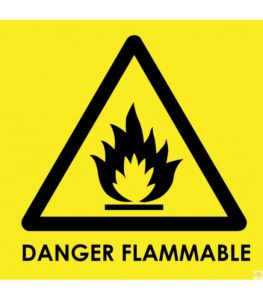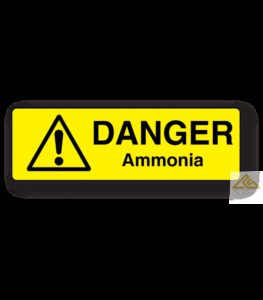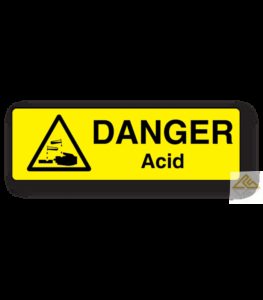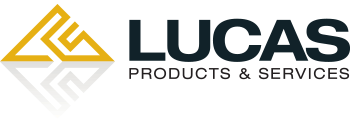Chemical signage can be a headache for any business with many regulations and restrictions. But it doesn’t have to weigh you down! We’ll help take care of your sign needs, no matter how complex the project may be. We offer custom-designed signage that is sure to meet your needs.
We have been in business since 2000 and specialise in graphics, printing, engraving, etching, and sign production, as well as other custom requirements that might fit your specific need such as safety labels, warning signs, engraved markers, etc. Browse through the website for more information on our other services. We are the signage experts!
We are one phone call away. Contact us today at (021)-242-8158 or leave us a message with any queries you may have about our quality workmanship and our competitive prices. We work hard to make sure you’re always satisfied when working with Lucas Products and Services.
Chemical Signage
Chemical signage is a major concern for industries. Regulatory bodies around the world, like Health and Safety Executive (HSE) in the UK or The Occupational Safety and Health Administration (OSHA) in the US, have regulations that require warning signs to be posted around dangerous chemicals used in the workplace. These signs must warn people of potential hazards in the area, including information such as what the chemical does, how it affects humans, and what precautions should be taken when working with it.
Chemical signage can also include what personal protective equipment (PPE) needs to be worn to remain secure when handling hazardous material. By providing clear warnings about possible dangers associated with using or being near certain chemicals, these signs will reduce accidents and injury rates at work sites. You can never be too cautious about safety in the workplace, especially if your employees potentially get exposed to agents that can cause severe skin or organ damage when not handled with care.
In today’s professional environment, the risk of exposure is not only reserved for those working in industries or outdoors — office workers can be exposed to industrial-strength detergents that contain cationic compounds such as quaternary ammonium salts, which have been known to cause contact dermatitis from overuse. But, chemical hazards remain a real and almost everyday threat for professionals that work in hospitals, farms, construction sites, and other field-related occupations.
Chemical safety is a critical but sometimes overlooked component of most workplace environments. The signs must be clear and easy to read for all employees, visitors, and emergency responders. If you’re looking for help with chemical signage in your industry or have other related questions, look no further than Lucas Products and Services.
What are Chemical Signs?
Chemical Signage can also be referred to as “Hazardous Material Warning”, “Safety Signs“, and/or “Cautionary Labelling”. Chemical signage is required for identifying potentially dangerous substances on site. It is a visual warning used to alert people who work in areas where chemicals have been stored or are being used. The use of signage is to inform users about the nature and level of risk present within an area and to raise awareness regarding any potential hazards that may be encountered, leading to a safer working environment.
Chemical signage offers identification of chemicals, including possible risks associated with the chemical and related hazards, such as flammability or vulnerability to shock. It can be supplied on self-adhesive vinyl or other types of rigid boards, depending on the size and quantity required. Chemical signage typically employs bright colours and legible lettering to improve its visibility.
As they say, it is always better to be safe than sorry!
What are COSHH Symbols?
COSHH symbols consist of a red and white diamond with a pictographic in the middle, warning of the potential consequences of mishandling a chemical. They are gradually phasing out the more familiar orange and black signs under the new CLP regulations.
Chemical substances are typically classified and labelled with one or an appropriate combination of the following types:

Flammable
Pictogram: an open flame
Meaning: Product contains extremely flammable compounds
Buy flammable signs

Gas under Pressure
Pictogram: a gas cylinder
Meaning: Product contains a gas under pressure that can explode when heated, causing significant cryogenic injuries or burns
Explosives
Pictogram: an exploding bomb
Meaning: Product contains unstable compounds that may explode, causing fire, blasts, and projection hazards

Health Hazards
Pictogram: an exclamation mark (!)
Meaning: Product contains an irritating substance that may cause an allergic reaction if swallowed or upon contact with skin
Toxic
Pictogram: skull and crossbones
Meaning: fatal or toxic if inhaled, swallowed, or upon contact with skin
Oxidising
Pictogram: a flame over a circle
Meaning: Product contains an oxidising agent that may intensify flames or cause explosions

Corrosive
Pictogram: a test tube dropping a corrosive substance on a hand or surface
Meaning: Product contains a compound that may corrode metal or cause severe chemical burns to skin or eyes, e.g., hydrochloric acid.
Serious Health Hazards
Pictogram: a person with a damaged chest
Meaning: Product contains compounds that may damage internal organs if swallowed
Dangerous for the Environment
Pictogram: a dead fish and tree
Meaning: Product contains compounds that leave toxic and lasting effects on fauna and aquatic life
What is the Importance of Chemical Signage?
Proper chemical signage is an integral element of an organisation’s health and safety policies. However, not every company sees them as an essential operational component. This oversight can sometimes account for the lapse in workplace safety interventions in the face of an accident.
Here are 4 reasons why proper use of chemical signage is essential:
- They offer instant visual communication of potential hazards.
- Chemical signs remind employees of the safest and most effective ways of operating in hazard-prone environments.
- They are a legal requirement under The Health and Safety (Safety Signs and Signals) Regulations 1996.
- These signs offer instructions that protect your employees and the general public from chemical hazards.
How Do You Label a Chemical?
Our comprehensive selection of chemical signs will help you to address your specific labelling and compliance needs.
You can browse through this carefully curated catalogue to find a sign that will meet pressing needs in compliance with workplace safety and health regulations. Our chemical signage options range from chemical symbol signs, MSDS labels, and more that comply with the Safety Signs and Signals Regulations 1996.
Our chemical hazard safety signs include;
Hazard statements
Hazard statements give clear precautionary advice on the risks involved in handling a specific material or product. They are written as phrases that describe the nature of the hazard. For instance, if it is flammable or presents a choking hazard.
The implicit nature of the hazard statement is determined using varying chemical classification criteria. Hazard statements that describe the immediate health risks of a product include;
- Fatal if swallowed
- May be corrosive to metals
- Toxic in contact with skin
- May cause respiratory irritation
- Explosive with or without contact with air
- Contact with acids liberates very toxic gas
Precautionary statements
A precautionary statement outlines a set of appropriate or immediate measures you should take to mitigate the consequences of exposure to hazardous substances or mixtures. Precautionary statements include;
- To prevent accidental contact with the eyes or skin, wear goggles and gloves.
- Handle under inert gas.
- Do not spray on an open flame or other ignition sources.
- Wash hands thoroughly after handling.
- Do not get in your eyes, on the skin, or on clothing.
- Avoid release to the environment.
Signal Words
The European Union’s Globally Harmonized System of Classification and Labelling of Chemicals (GHS) includes two signal words that must be used on chemical packaging to help users know the level of danger: ‘danger’ and ‘warning’.
The ‘Danger’ signal word is used for products with more serious risks, and the ‘Warning’ sign is used for chemicals with moderate risks.
Hazard pictograms
In order to alert users to potentially hazardous chemicals, the European Union has set out a standardised system for pictograms. These symbols appear in the shape of a diamond with a red border and show what risk may be present. One or more symbols might appear on the packaging of a single chemical, depending on how hazardous it is; a larger number of symbols means the chemical is more dangerous.
Safety data sheets
Safety Data Sheets are useful in outlining the potential risks associated with the chemicals that they describe. They include information such as;
- Physical data (melting point, boiling point, flashpoint, etc.)
- Chemical hazards (flammability, water solubility, etc.)
- Health effects (toxicity, flammability, corrosion, etc.).
What Are the Common Types of Material That Make Chemical Signage?
Hazardous chemicals are corrosives that degrade any material on contact. That’s why it helps to consider the materials used in the production of such signage. It helps to have a sign that is highly resistant to chemical coating and environmental elements such as UV rays or moisture.
The following materials make signs that can withstand such abuse while remaining visually adequate to their need:
- Fibreglass
- Performance Polyester, e.g. Vinyl
- Polystyrene Plastic
- Traffolyte
Choosing Chemical Signage
Chemical signage is available in such a wide variety that picking what your company needs can be challenging. The following categories make it easier for you to settle on a sign that will help you enhance your organisation’s health and safety initiatives:
Diamond Hazard Warning signage is commonly used to store and transport hazardous gases and other flammable materials. They are colour-coded to enhance their visibility.
Write-on Diamond Hazard signage provides warnings and safety procedures to be taken in the event of an accident.
UN signage offers detailed instructions to emergency services on the nature of toxic substances in transit and how to handle them.
GHS (Globally Harmonised System) signage is a globally ratified UN convention on labeling hazardous materials bound for overseas markets.
Where and how Chemical Safety Signs Should Be Placed
Chemical hazard signage needs to be highly visible to enhance your workplace and public safety.
Here are a few rules to follow to achieve the proper placement;
- Signage should be placed at eye level in a location that is unobscured to enhance their visibility.
- They should be colour-coded, readable and prominent enough not to fade in the background.
- Placing too many signs in one location adds noise to their visual impact. So, it’s wise to space them out.
- Signs should be placed around an area where there has been an accident involving a hazardous substance. This warns your employees to keep off until the mess is cleared up.
Depending on each situation (location, space available), the placement of signs can vary. Still, there is no standard way to place them so long as they remain visible and easy to access. Some possible places could include:
- Around the perimeter of an area in which hazardous materials are kept
- Along hallways that lead to laboratories and other places where hazardous materials are used or stored
- Near the entrances to rooms that house chemicals
- By containers, on shelves, and even on individual storage tanks
When placing chemical signage, keep in mind what areas are more frequently travelled through by employees. Again, putting up multiple signs can also help ensure they’ll be noticed better than solitary ones. This prevents employees from missing certain precautions while walking through an area.
It is also wise to conduct safety training and run drills to ensure your employees understand the importance of each sign. Such a measure ensures maximum operational efficiency for the company. It also reduces accidents because your workers learn how to avert them, and they are equipped for fast response in their event.
